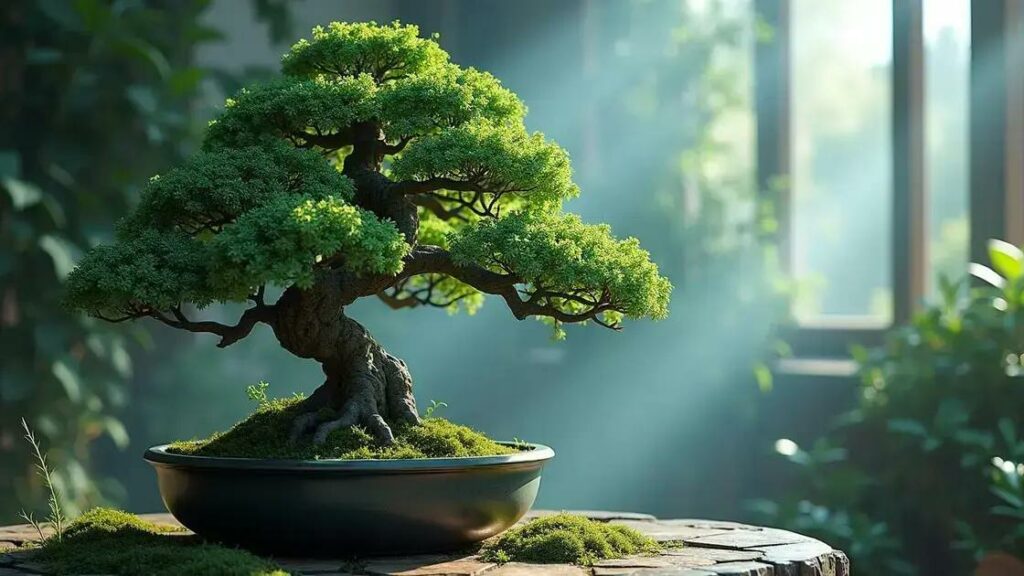How to care for bonsai plant lovers often seek advice on nurturing their green companions. Many wonder about the secrets that lead to the thriving of these miniature trees. Whether you’re a beginner or an experienced hobbyist, understanding the key factors in bonsai care can make all the difference in achieving lush foliage and stunning shapes.
Table of Contents
ToggleEssential watering schedule for bonsai trees
Essential watering schedule for bonsai trees is crucial for their health and longevity. Proper watering not only keeps your bonsai hydrated but also encourages vibrant growth and beautiful foliage. Each species of bonsai has distinct watering needs, which makes it vital to establish a routine based on your tree’s specific requirements.
Understanding your bonsai’s watering needs
Bonsai trees thrive when you pay attention to several factors:
- Species type: Different species have varying moisture needs.
- Pot size: Smaller pots may dry out more quickly than larger ones.
- Climate: Humidity levels and temperature significantly affect water intake.
- Soil composition: Well-draining soil retains moisture differently than compact mixes.
Creating a watering schedule
Follow these steps to devise a watering schedule for your bonsai:
- Check moisture levels: Stick your finger about an inch into the soil. If it feels dry, it’s time to water.
- Water thoroughly: When watering, do so until water drains from the pot’s bottom to ensure the roots absorb moisture effectively.
- Adjust frequency: Water more frequently during warmer seasons and less in cooler months.
- Monitor growth: Pay attention to any changes in growth, which may indicate your watering schedule needs adjusting.
Signs of over or under-watering
Recognizing the signs of improper watering can save your bonsai:
- Over-watering: Yellowing leaves, root rot, or mold growth.
- Under-watering: Wilting leaves, browning edges, or soil that pulls away from the pot.
By establishing an essential watering schedule for bonsai trees, you’re setting the groundwork for a thriving miniature landscape. If you’re interested in expanding your gardening skills, consider exploring indoor gardening techniques that also apply to varying plant types.
Optimal soil requirements for bonsai plants

Optimal soil requirements for bonsai plants are fundamental to their health and growth. The right soil not only provides nutrients but also ensures proper drainage and aeration, both essential for bonsai’s delicate root systems.
Key components of bonsai soil
When selecting or mixing soil for your bonsai, consider the following critical elements:
- Organic matter: Ingredients such as bark, compost, or peat provide nutrients and improve moisture retention.
- Inorganic material: Components like Akadama, pumice, and lava rock enhance drainage and aeration.
- pH level: Ensure the soil pH is slightly acidic to neutral (around 6.0 to 7.0) to support healthy root development.
Mixing your own bonsai soil
Creating your own soil mix can provide optimal conditions tailored for your specific bonsai species. Follow these steps:
- Choose your base materials: Combine equal parts of Akadama, pumice, and lava rock.
- Adjust for specific needs: For trees that retain more moisture, add a touch of peat moss.
- Test the mix: Before potting, check the moisture retention by soaking a small sample, ensuring it drains well.
Commercial soil options
There are many ready-made soil mixes available that cater to bonsai plants. When purchasing, look for:
- Products labeled specifically for bonsai trees.
- High-quality ingredients with minimal additives.
- Positive reviews from other bonsai enthusiasts.
Understanding the optimal soil requirements for bonsai plants ensures that your miniature trees flourish. If you’re interested in expanding your gardening skills, consider exploring indoor gardening techniques that apply to varying plant types for better results.
Best sunlight exposure for thriving bonsai
Best sunlight exposure for thriving bonsai is a key factor in nurturing your miniature trees. The right amount of light affects growth patterns, leaf coloration, and overall health. Each bonsai species has its unique light needs, which makes understanding sunlight exposure essential.
Differentiating sunlight requirements
Depending on the species, bonsai trees may need different types of sunlight:
- Direct sunlight: Trees like Ficus and Junipers flourish with full sun (6-8 hours daily).
- Partial shade: Species such as Maples and Azaleas prefer around 4-6 hours of sunlight and some shade in the afternoon.
- Filtered light: Plants like Serissa thrive in bright, indirect light, benefiting from softer, diffused sunlight.
Creating the perfect light environment
To create an optimal light environment for your bonsai, consider the following tips:
- Positioning: Place your bonsai near a south or west-facing window for maximum sunlight exposure.
- Rotate regularly: Turn your bonsai every few weeks to ensure even growth on all sides.
- Monitor growth: Watch for signs of stress, such as leggy growth or leaf drop, which can indicate inadequate light.
Understanding seasonal changes
Lighting conditions can change dramatically with the seasons. Here’s how to adjust:
- Winter: During shorter days, consider using grow lights to supplement natural light.
- Spring and summer: Increase time outdoors but be cautious of strong midday sun, which can scorch leaves.
- Fall: Gradually reduce exposure as days shorten, preparing your bonsai for dormancy.
By providing the best sunlight exposure for thriving bonsai, you enhance their growth and beauty. If you’re curious about enhancing your green thumb, consider exploring indoor gardening techniques that apply to a variety of plants.
In conclusion
Caring for bonsai plants requires attention to detail, particularly regarding watering schedules, soil quality, and sunlight exposure. By understanding the essential needs of your bonsai, you can ensure its health and beauty thrive throughout the seasons. Incorporate the tips provided in this guide to create the perfect environment for your miniature trees. For more insights and tips on enhancing your indoor garden, stay curious and keep exploring the fascinating world of bonsai care.

